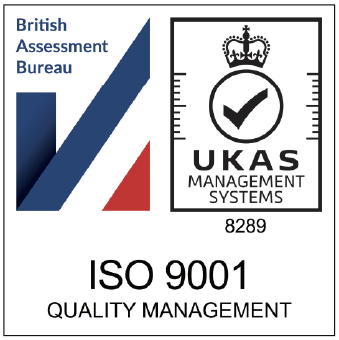Do you run a beauty or cosmetics brand? Then you’ll probably be aware that consumers are increasingly seeking out brands that are doing all they can to operate in a sustainable way. In other words, sustainability is big business. But, how exactly can you make your beauty brand more sustainable? Keep reading and you’ll find out!
The rise of green cosmetics
The most obvious and highest impact action you can take with regards sustainability, is to make your products ‘greener’.
Increasingly, the most eco-conscious beauty brands are embracing green cosmetics – cosmetics that are produced using environmentally-friendly emulsifiers and other ingredients that are from renewable sources.
The rise of green cosmetics has been rapid, with a 15% annual growth rate – compared to the 5% annual growth rate for cosmetics products produced with petrochemical and other non-renewable ingredients.
It’s clear that the tide of consumer opinion is with green cosmetics.
Make your cosmetics green and you’ll be able to ride the growing wave of ‘conscious consumption’ that is washing through the beauty industry.
What are some sustainable cosmetic ingredients?
If you want to turn your products ‘green’, what sort of ingredients do you need to be sourcing?
We’ve set out some of the most popular sustainable cosmetic ingredients below.
Castor oil
Derived from the seeds of the castor plant, castor oil has a number of anti-inflammatory and pain-relieving properties. Specific variants such as Jamaican Black castor oil are ideal for use in shampoos as they both remove impurities from, and clarify, the scalp.
Fatty acids
Fatty acids such as stearic acid, coconut fatty acid and oleic acid are highly versatile green ingredients which have multiple uses including as lubricants, release agents, adhesives, base stocks and emulsifiers.
You’ll find fatty acids used in a broad range of eco-friendly beauty and cosmetic products including soaps, lotions and creams.
MCT coconut oil
If your range includes skincare products, then you should look into MCT coconut oil.
Extracted from the kernel of mature coconuts, MCT coconut oil is an excellent carrier oil. As it is light and easily absorbed into the skin, it is ideal for use in a wide range of skincare products.
What’s more, it doesn’t leave an oily residue, and as such, is perfect for use on sensitive skin.
Phenoxyethanol
Should you be looking for a green preservative to use in your beauty products, then consider phenoxyethanol.
It inhibits both bacterial and mold growth and can be used in products such as lotions, creams, make ups and gels.
Eco-friendly packaging
Packaging is an important part of any beauty brand. Not only does it play an important role in the marketing and appeal of your products, but it also helps to protect products, preventing damage and loss.
But consumers don’t want this packaging to be at the expense of the planet.
Where you can, you should attempt to keep packaging weight and volume to the minimum amount required to maintain the safety and hygiene of your products.
Additionally, you should try to keep non-recyclable or non-renewable packaging materials to a minimum.
Traditionally, consumers would have expected many beauty products to be sealed with a clear plastic wrap – but as people learn that it’s made from polypropylene (a material produced from oil) – expectations are changing.
Instead, aim to use renewable packaging materials such as papers and cardboards. Make sure that your branding is applied using sustainable, low-impact inks too.
Finally, you should aim to make your packaging reusable – this will ensure it doesn’t go to landfill, and instead, can be appropriated for other purposes.
Offset your carbon emissions
It’s not always possible to make every part of your beauty or cosmetics business sustainable.
For example, you may have to source your ingredients from overseas locations, thus generating carbon emissions.
But, what you CAN do, is to offset those carbon emissions that you can’t avoid.
For example, you can commit to planting a target number of trees per year as a way of compensating for the carbon emissions associated with your business operations.
Another way in which you can offset emissions is to offer a recycling programme, so that customers can return used and/or expired products. These can then be recycled, further offsetting your carbon emissions.
Update your business policies
This may seem like a strange piece of advice to add to this list, but changing your business policies can actually have a big impact on sustainability.
For example, you could stipulate that business travel is kept to a minimum, and where absolutely necessary, a green transport option is used.
Other business policies you could adopt include implementing a ‘green first’ supply chain policy, where your buyers must first explore all sustainable options before they opt for a non-renewable/non-sustainable option.
Switch to an eco-friendly fulfilment partner
One of the most effective things you can do to boost your business’ sustainability is to switch to an eco-friendly fulfilment partner that understands the nuances and intricacies of beauty and cosmetics fulfilment.
The traditional fulfilment process, such as receiving and managing inventory, processing orders and shipping them to customers has a significant carbon footprint.
By switching to a quality, reputable eco-friendly fulfilment partner, you can significantly reduce your carbon emissions whilst maintaining a rapid fulfilment process that’ll keep you and your customers happy.
What to look for in an eco-friendly fulfilment partner
When it comes to finding an eco-friendly fulfilment partner, some providers say they’re eco-friendly simply because they have electric vehicles and leave it at that.
But, if you want to truly reduce the emissions associated with your fulfilment process, then your chosen provider should have implemented the following things:
- Minimal energy consumption across their operations. Have they made switches such as installing LED lights? Do they have policies in place to mandate energy saving practices?
- 100% waste recycling. A good eco-friendly fulfilment provider will ensure that every piece of cardboard, shrinkwrap and other materials used across their operations is recycled.
- Paperless warehousing. Instead of using reams and reams of paper, an eco-friendly fulfilment provider will be using a paperless system across their warehousing operations.
- Low emission delivery. This is one of the most visible ways that a fulfilment provider can reduce their emissions. A good eco-friendly fulfilment partner will have relationships with couriers that use electric and other low-impact vehicles.
- Eco consumables. It’s the little details that matter. Quality eco-friendly fulfilment providers will use eco consumables such as PE mailing bags and 100% recyclable paper tape across their operations.
Make your beauty brand more sustainable with 3PL Zero
3PL Zero is an eco-friendly fulfilment provider that does all of the things listed above and more, to be as green and sustainable as possible.
By working with 3PL Zero you can significantly reduce the environmental impact of your beauty or cosmetics brand, giving you something to shout about to your eco-conscious consumers!
Find out more about 3PL Zero now
For more eCommerce fulfilment, shipping and sustainability advice, read the 3PL blog…
7 Reasons Why Your eCommerce Business Should Embrace Sustainability | How Important Are Eco Friendly Packaging Options to Today’s Businesses? | Sustainability in eCommerce: How Brands Can Become More Eco-Friendly
Speak to 3PL about your order fulfiment
It’s time to supercharge your business and overtake your competitors. Speak to 3PL today and find out how we can take your ecommerce and B2B fulfilment to the next level.


